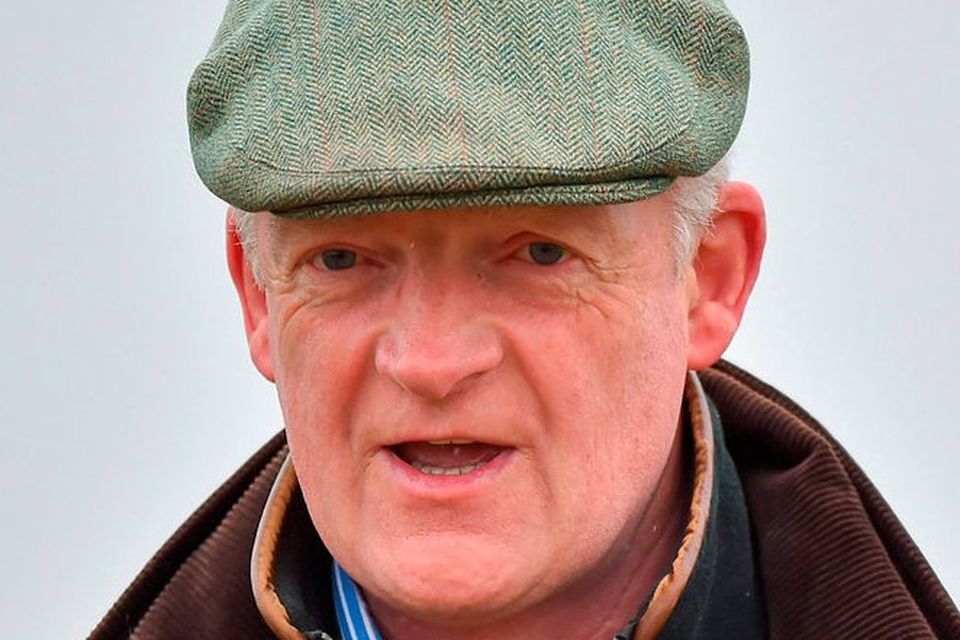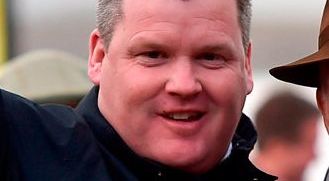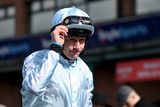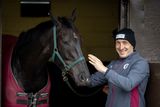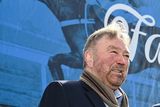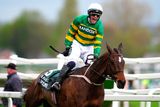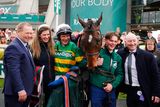Measures must be put in place to ensure smaller trainers aren’t totally obliterated from racing
Analysis
Trainer Willie Mullins. Photo: Seb Daly/Sportsfile
The final declarations for Monday's Boylesports Irish Grand National will not be known until noon today but one thing is for certain: leading trainers Gordon Elliott and Willie Mullins will saddle more than half of the field for the Fairyhouse feature.
Of the 55 horses left, Elliott houses 16 to Mullins' eight while the Meath handler has 13 of the top 40 in the weights with his Closutton counterpart responsible for seven. The top 20 in the betting are also dominated by the pair with seven apiece.
While their unrelenting battle for the Irish trainers' championship is thoroughly intriguing and both should be lauded for their success, those numbers are staggering and it is having a ripple effect on smaller trainers who are biting the dust at alarming rates as a result.
Recent Irish Horseracing Regulatory Board (IHRB) figures revealed that National Hunt training licence holders fell below 100 for the first time since 2008 with the drop to 93 an indictment of a failing system where only the strong survive.
Marquee names like Charlie Swan, Joanna Morgan, Colm Murphy and Sandra Hughes have all folded in recent times, citing a lack of profitability and with the scheduled IHRB trainers' course scrapped after only two applied, they are unlikely to be replaced.
With Elliott chiefly supplied by Michael O'Leary's Gigginstown House Stud and Mullins powered by Rich Ricci, their significant financial backing means many others miss their slice of the pie and with an inevitability that one of the 'Big Two' will plunder the majority of the Graded prizes on Irish shores, smaller trainers stand no chance.
Trainer Gordon Elliott wins the Irish Grand National. Photo: Seb Daly/Sportsfile
The fact that previous Cheltenham Festival-winning trainers like Paul Nolan, Noel Meade and Tony Martin all had just one runner each at the Cotswolds is worrying - Elliott and Mullins trained 15 of the 17 Irish winners - but even with that in mind, their opportunity to show their capabilities should come in lucrative Irish handicaps.
The Troytown, Thyestes, Galway Plate and Hurdle as well as the Irish Grand National among others offer them a chance to keep the ball rolling but the picture has changed dramatically and smaller trainers often cannot take their chance or don't make the grade.
The astonishing representation from the yards of Mullins (right, above) and Elliott (right, below) in the Fairyhouse showpiece begs the question - should some measure be taken before the game is obliterated altogether?
Should restrictions be put in place on how many horses a trainer/owner can run in certain races to ensure some sort of level playing field? Would restricting owners and trainers to five runners in these big handicaps help open the gates for others? Trainer Tony Mullins thinks so.
Mullins, who had as many as 50 horses but only now looks after a dozen with an increased focus on the less competitive Flat scene, feels small trainers like him are barely existing and places much blame at Horse Racing Ireland's (HRI) door for allowing the likes of O'Leary and Limerick owner JP McManus to run their battalions of horses in the same races.
"I am seriously against these two sets of colours being allowed to run ten apiece in the Paddy Power, the Galway Plate, the Kerry National. I just think it's absolutely ruining the game at a phenomenal speed," he told 'The Irish Field' earlier this year.
"The ordinary owner feels that he can't compete. This thing of completely obliterating the Irish National last year was an absolute circus. This just has to be stopped if our game wants to continue and people feel they have a fighting chance."
O'Leary, who was responsible for 13 of the 28 runners in last year's Easter Monday event and has 16 still standing before today, rubbished his claims.
"I love Tony Mullins dearly. But the brother of Willie Mullins complaining about somebody dominating jump racing - come on! For the last five or six years Willie would have five of the six runners in a Grade One," O'Leary told the 'Racing Post' recently.
"If you block owners from having more than five runners in a race or whatever, all you do is devalue the race. Besides, if you're going to limit me, are you going to limit trainers as well - who's going to limit Willie to just two horses in a Grade One? That's the sort of artificial bulls**t that's never going to work."
Strong words indeed, but perhaps it would cause trainers and owners to be far more selective.
The amount of money being pumped into the racing industry by these big owners is of huge benefit but the small man is being marginalised with trainer Charles Byrnes describing it as a "loss-making business".
Tom Foley, the veteran handler of the People's Champion Danoli, recently told 'The Irish Field' that the chances of hitting the big time with a good horse are "nearly the same as dreaming you'd win the Lotto", with small owners asking "what's the point?"
Placing restrictions on the number of runners by trainers/owners in big races may offer some trainers a lifeline and it wouldn't be an alien concept to racing if introduced. Formula One teams can only enter two cars on the grid.
Jamaica would could have had at least six of the 100m and 200m finalists in recent years were the Olympic quota for track and field events not three, while Tour de France teams are limited to eight riders, otherwise Team Sky and other big hitters would run riot.
Racing has changed but more change may be required.
